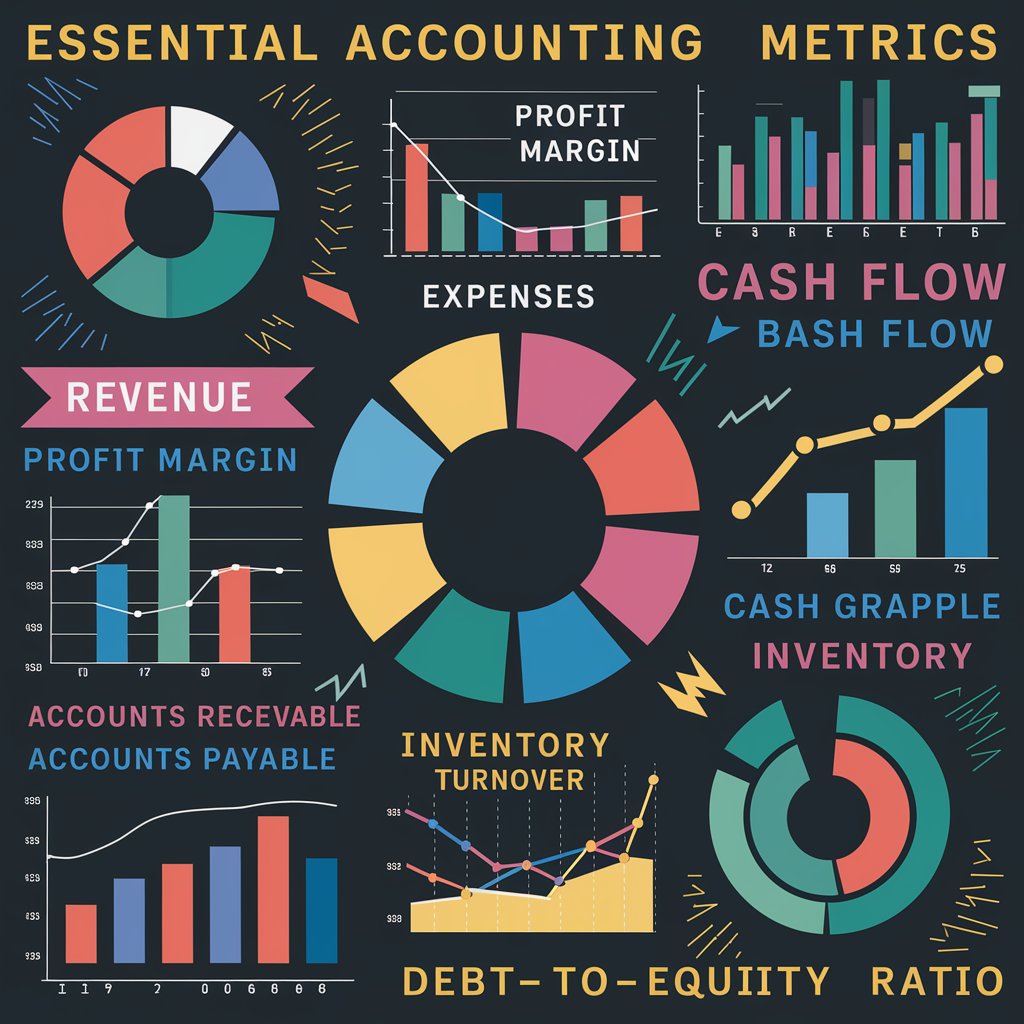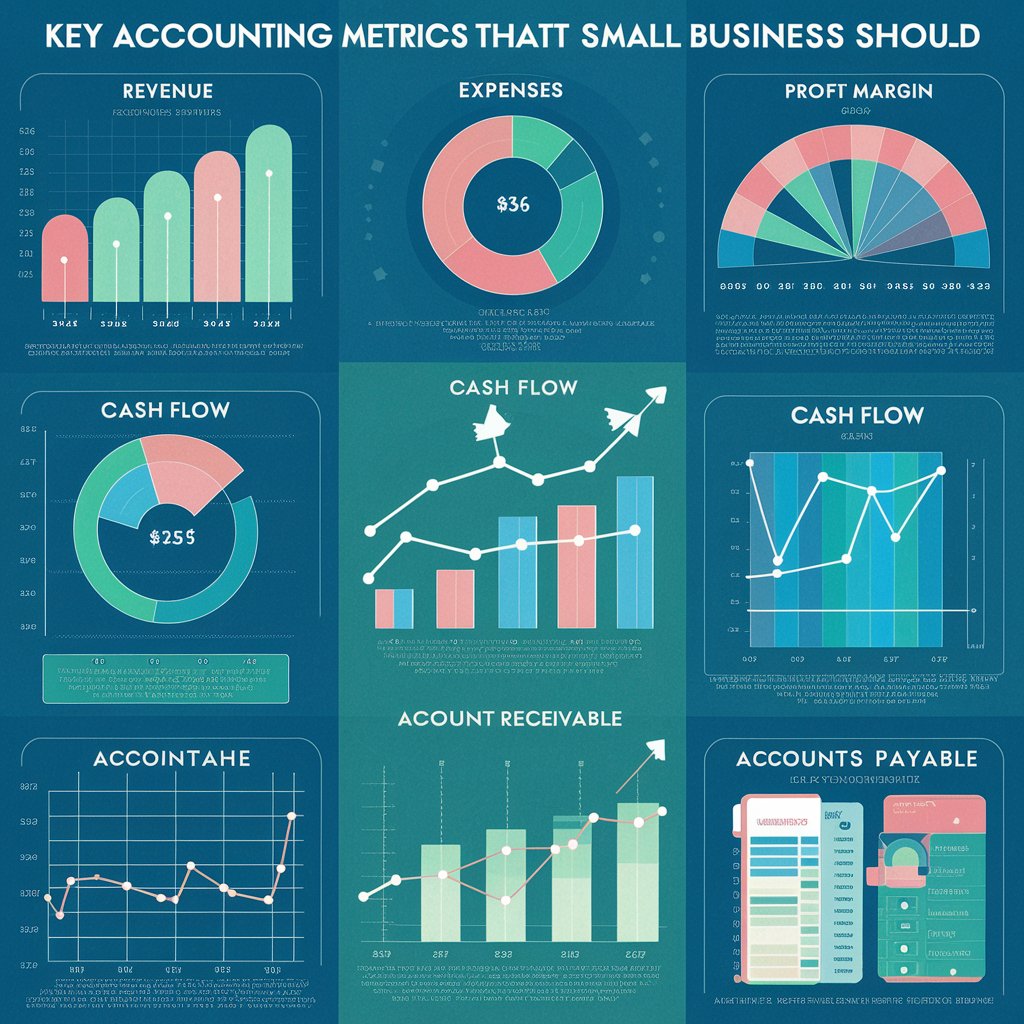Understanding and managing your finances is crucial for the success of any small business. Tracking key accounting metrics helps you monitor your business’s financial health, make informed decisions, and identify areas for improvement. This article will explore the top five accounting metrics that every small business owner should track to ensure profitability and growth.
1. Cash Flow
Why Cash Flow Matters
Cash flow is the movement of money in and out of your business. Positive cash flow ensures that you have enough liquidity to cover your expenses, pay your employees, and invest in growth opportunities. Negative cash flow, on the other hand, can lead to financial difficulties and business failure.
How to Track Cash Flow
- Cash Flow Statement: A cash flow statement provides a detailed overview of your cash inflows and outflows over a specific period. It is divided into three sections: operating activities, investing activities, and financing activities.
- Cash Flow Forecast: Regularly forecast your cash flow to anticipate potential shortfalls and plan accordingly. This helps in making informed decisions about spending, investments, and financing.
Tips for Managing Cash Flow
- Accelerate Receivables: Encourage prompt payment from customers by offering discounts for early payments or using electronic invoicing.
- Delay Payables: Negotiate longer payment terms with suppliers to retain cash longer.
- Maintain a Cash Reserve: Set aside a portion of your revenue as a cash reserve to handle unexpected expenses and periods of low cash flow.

2. Gross Profit Margin
Why Gross Profit Margin Matters
Gross profit margin measures the profitability of your core business activities. It shows how efficiently you are producing and selling your products or services. A higher gross profit margin indicates that your business can generate more profit from its sales.
How to Calculate Gross Profit Margin
Gross Profit Margin = (Revenue – Cost of Goods Sold) / Revenue
- Revenue: Total income from sales.
- Cost of Goods Sold (COGS): Direct costs associated with producing the goods or services sold, such as materials and labor.
Tips for Improving Gross Profit Margin
- Increase Prices: Evaluate your pricing strategy and consider raising prices if market conditions allow.
- Reduce COGS: Find ways to lower production costs, such as negotiating better terms with suppliers or improving operational efficiency.
- Enhance Sales Mix: Focus on selling higher-margin products or services to boost overall profitability.
3. Net Profit Margin
Why Net Profit Margin Matters
Net profit margin measures the overall profitability of your business after accounting for all expenses, including operating costs, taxes, and interest. It provides a clear picture of your business’s financial health and its ability to generate profit from its total revenue.
How to Calculate Net Profit Margin
Net Profit Margin = Net Profit / Revenue
- Net Profit: Total revenue minus all expenses (operating expenses, taxes, interest, etc.).
- Revenue: Total income from sales.
Tips for Improving Net Profit Margin
- Control Operating Expenses: Regularly review and manage your operating expenses to identify and eliminate unnecessary costs.
- Optimize Tax Strategy: Work with a tax professional to identify tax deductions and credits that can reduce your tax liability.
- Increase Revenue: Implement strategies to boost sales, such as expanding your product line, entering new markets, or improving marketing efforts.
4. Current Ratio
Why Current Ratio Matters
The current ratio measures your business’s ability to meet its short-term obligations with its short-term assets. A healthy current ratio indicates that your business has sufficient liquidity to cover its debts and liabilities as they come due.
How to Calculate Current Ratio
Current Ratio = Current Assets / Current Liabilities
- Current Assets: Assets that can be converted into cash within a year, such as cash, accounts receivable, and inventory.
- Current Liabilities: Obligations that are due within a year, such as accounts payable, short-term loans, and accrued expenses.

Tips for Maintaining a Healthy Current Ratio
- Manage Inventory Efficiently: Avoid overstocking and ensure that inventory levels align with sales demand.
- Monitor Receivables: Implement effective credit policies and follow up on overdue accounts to ensure timely collection of receivables.
- Control Short-Term Debt: Avoid taking on excessive short-term debt and manage your liabilities carefully.
5. Accounts Receivable Turnover
Why Accounts Receivable Turnover Matters
Accounts receivable turnover measures how efficiently your business collects payments from customers. A high turnover rate indicates that you are collecting receivables quickly, which improves cash flow and reduces the risk of bad debts.
How to Calculate Accounts Receivable Turnover
Accounts Receivable Turnover = Net Credit Sales / Average Accounts Receivable
- Net Credit Sales: Total sales made on credit minus returns and allowances.
- Average Accounts Receivable: The average amount of accounts receivable during a specific period, calculated by adding the beginning and ending accounts receivable balances and dividing by two.

Tips for Improving Accounts Receivable Turnover
- Set Clear Payment Terms: Establish clear and consistent payment terms for customers, and communicate these terms effectively.
- Invoice Promptly: Send invoices immediately after delivering goods or services to expedite payment.
- Follow Up on Overdue Accounts: Implement a system for tracking and following up on overdue invoices to ensure timely collection.
Conclusion
Tracking key accounting metrics is essential for small business owners to monitor financial health, make informed decisions, and drive profitability. By focusing on cash flow, gross profit margin, net profit margin, current ratio, and accounts receivable turnover, you can gain valuable insights into your business’s performance and identify areas for improvement.
Implement these metrics into your regular financial analysis to stay on top of your business’s financial health and ensure long-term success. With accurate and timely data, you can make strategic decisions that enhance profitability and support sustainable growth.
